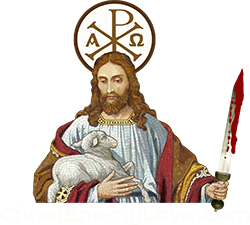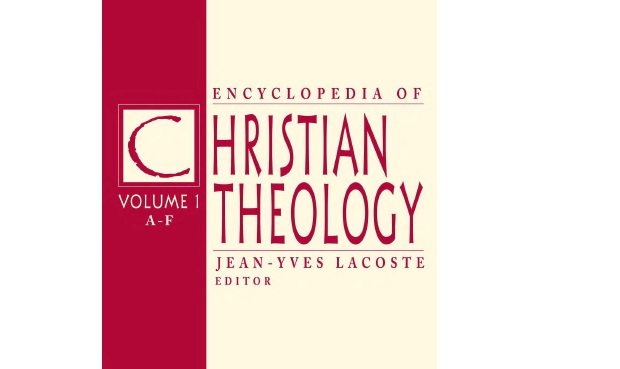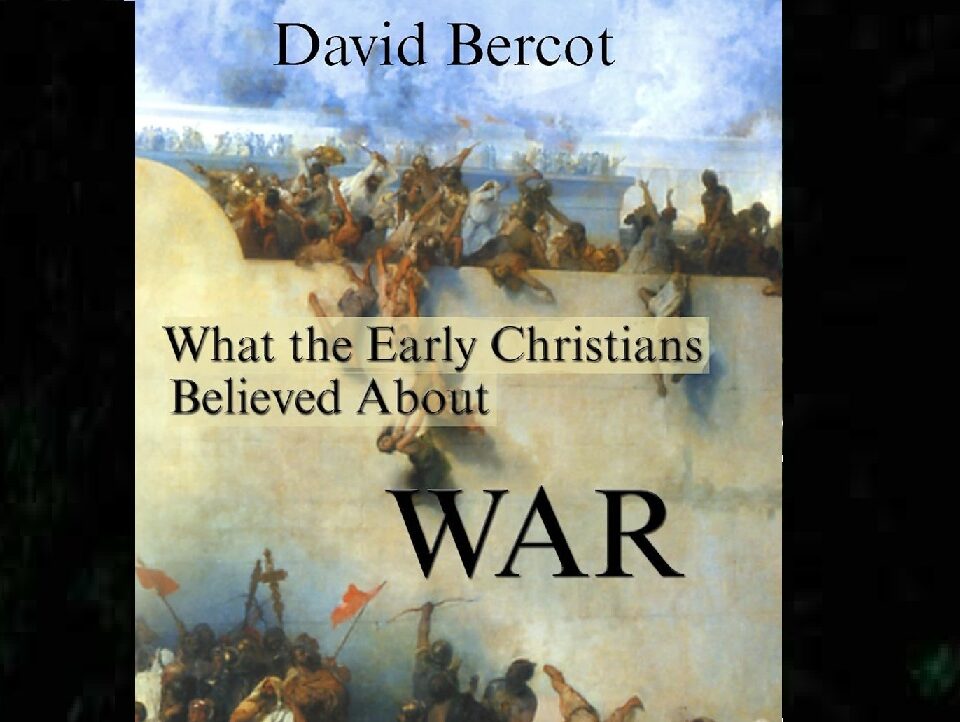Encyclopedia of Christian Theology, vol. 1., ed. Lacoste.
The New Testament shows with the cross of Jesus the paroxysm of violence and of its opposite. This opposite is the other violence, that of the Spirit of God. It marks Jesus’ hyperbolic precepts of perfect justice (Mk 9:42–49; Mt 5:29f.), of nonresistance against the wicked (Mt 5:39), of the necessary ruptures (Mk 8:34f.; Mt 8:21f.; Lk 9:61). The invisible “strong man” is to be mercilessly crushed (Mk 3:27; Lk 11:22). Jesus brings “the sword” (Mt 10:34). Whereas in Matthew 11:12 the violence is that of the enemies of the Kingdom, in Luke 16:16 it is rather the force that brings down the ancient barriers (Schrenk 1933).
For Luke, those close to Jesus await liberation and a new royalty for Israel (Lk 1:68, 1:71, 1:74, 24:21, Acts 1:6). James and John count on compulsion from heaven, as in the days of Elijah (Lk 9:54), an idea rejected by Jesus. Despite the confrontations (see Mt 12:30, 12:34f.; 23; Lk 11:44), the narrators are careful not to attribute any provocation to Jesus. Driving the merchants from the temple (Mk 11:15ff.; with a whip: Jn 2:15) is a symbolic gesture, not an action with a concrete aim (see Mk 11:12ff., 11:20–24). In the Passion*, the Jesus/Barabbas (zealot) alternative clearly opposes the solution of violence to that of Jesus. When the time came, Jesus gave himself up to death without resisting (Mt 26:53; Jn 18:36), but without persuading his disciples to join him (see the swords of Lk 22:36ff., 22:49ff.). He acquiesced entirely in that obedience, interpreted by the entire New Testament as the fulfillment of the Scriptures.
The victory of the violence of love dissipates the counterfeits of gentleness, which are a trap for Christians. This is why the Pauline vocabulary retains the violent terms of the Old Testament literally: the cross is the victory over the enemy that is death (1 Cor 15:25ff.; see Ps 110:1); it kills hatred (Eph 2:16), Jesus takes prisoner the images of death (Eph 4:8 citing Ps 68:19; see Col 2:15), he will destroy them (1 Cor 15:26), the apocalyptic animals of Daniel 7 will be under the feet of the Son of man (ibid., Ps 8:6f.), death will be swallowed up (1 Cor 15:54f.; see Hos 13:14; Is 25:8 LXX; Ex 15:4 LXX). This style is related to an apocalyptic idiom (2 Thes 2:8), in which all the Old Testament images are carried to an extreme: the “Word of God” makes war in “a robe dipped in blood” (Rev 19:13; see 14:20): it is “the time . . . for destroying the destroyers of the earth” (Rev 11:18).




